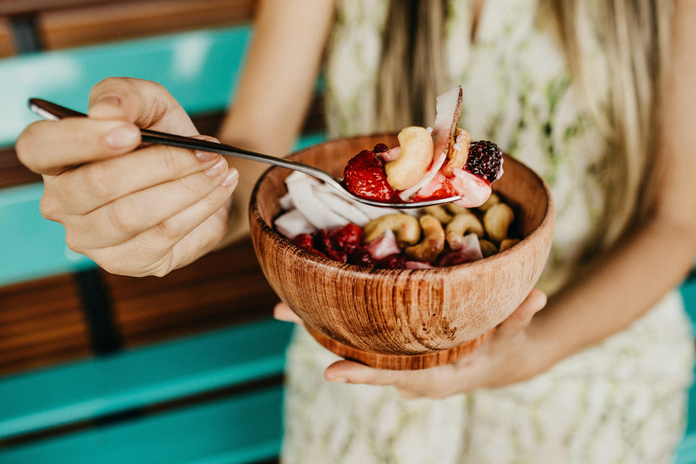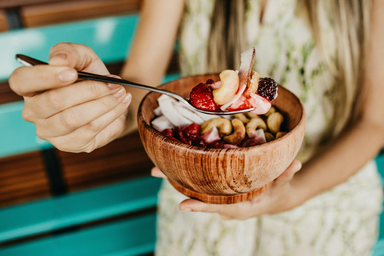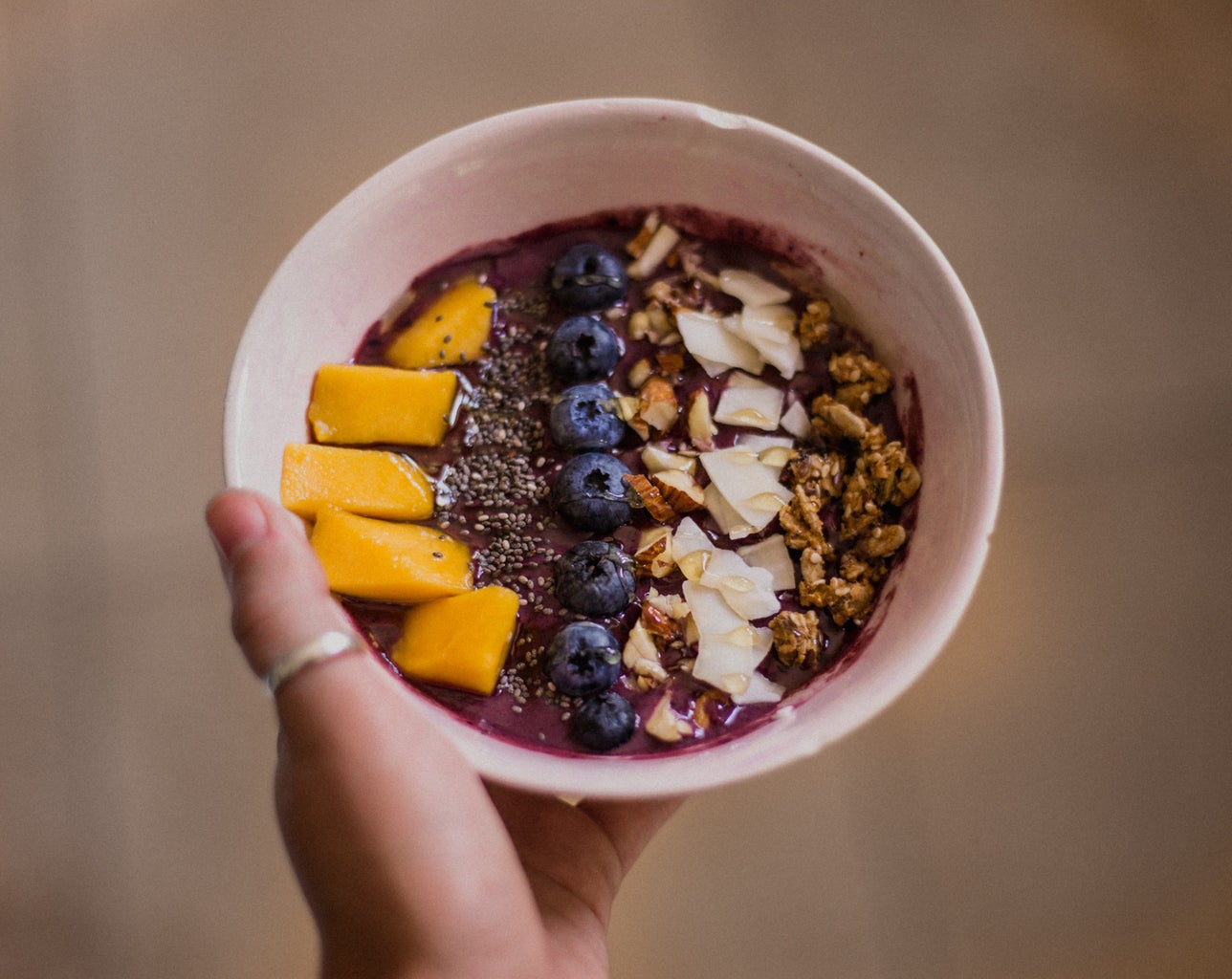Back in 2021, one of my professors decided to talk about açaí while he waited for more students to log in onto Zoom. He advised us to go to Oakberry and ask for an açaí bowl with the same toppings as his choice, which included peanut butter. I was surprised to discover they ate açaí such as with cacao nibs, peanut butter and whey protein.
As a Northern Brazilian, I’m familiar with how people eat açaí in the fruit’s place of origin, and none of these ways include bowls with different fruits and toppings. If you are now the one surprised, stay with me! Let’s first start off with the origin of açaí.
According to legend, the population of the Tupi tribe that lived in what today is the city of Belém–the capital of Pará–was increasing unpropitiously to their food supply. In order to contain the hunger crises, the tribe’s chief Itaki ordered the sacrifice of all newborn children–including his granddaughter–until the group found a food source that could feed everyone. When his daughter Iaçã lost her baby, she cried for days and prayed to the god Tupã to give her father another solution for the hunger. In response to her prayer, Iaçã had the illusion of hearing and seeing her baby sit at the foot of a palm tree. As she approached her daughter, however, the baby disappeared, and Iaçã died of heartbreak.
At sunrise, the tribe found Iaçã’s body. Her arms hugged the tree while her eyes stared at the top, where there were small dark fruits. The group picked and squeezed the berries, finding a nutritious juice that would become the new food supply of the tribe. Therefore, Itaki lifted the sacrifice of the newborn and named the berry açaí, which is Iaçã from back to front and translates to “fruit that cries” in the Tupi language.
In addition to being part of their heritage, 60% of Brazilian families that earn at least a minimum wage in Pará eat or drink açaí every day. As the journalist Maria Clara Rossini writes in the article, ”historically, açaí represents subsistence.”
But as Ian Walker from BCC mentioned, ”few açaí addicts outside Brazil know that their açaí bowls are about as traditional to the country as a ham and pineapple pizza is to Italy.” This phenomenon happens even among Brazilian açaí addicts, actually. In Pará, the state of the legend and responsible for 95% percent of açaí’s production, ”Paraenses” (those born in Pará) usually eat açaí as a sauce or dip during lunch and dinner rather than a pre-workout bowl.
”I learned to eat it with fish or shrimp, which (in my opinion) is much more tasty than eating the sweeter versions of it,” said Arthur Costa da Silva, a Paraense and recent History graduate from NYU Abu Dhabi.
Although Amazonas is both one of Para’s neighboring states and the second largest producer of açaí, its ”Amazonenses” don’t eat açaí as a sauce or dish of a salty meal. They eat the pure version, which is creamy, and the frozen version of açaí. Both these options are eaten as a snack or dessert, often with tapioca flakes as a topping. Amazonese myself, I enjoy eating frozen açaí with tapioca flakes and condensed milk.
The differences in eating açaí become more striking as we go east or south of Brazil. Isabela Dias Schmidt, born in the Southeast of the country, is an incoming sophomore studying human and organization development at Vanderbilt University. She said that she ”usually [eats] industrially sweetened açaí straight out of the freezer with bananas, powdered milk, sometimes melted chocolate and grapes. It usually comes in a bowl, about 200 ml.”
The industrial aspect that Dias Schmidt mentions is due to açaí’s rapid oxidation. 72 hours after their harvest, açaí berries start oxidizing, losing their taste, flavor and smell. Consequently, the açaí sold in other regions of the country and abroad is not pure but mixed with guaraná syrup and other ingredients to keep it preserved. The difference in taste and texture is significant.
Andrea Leon, Amazonense and recent international relations & journalism graduate from NYU CAS, said she has eaten açaí in the U.S. and noticed it has more sugar than the ones in Brazil. ”And also the texture is more water-like, it reminds me a little bit of the açaí from Brazil, but definitely not the same. I think especially, of course, the flavor but also the texture. And here they add a lot of crazy toppings that I don’t get it.”
Even Dias Schmitd added, ”Yes. I like it well enough, but not particularly. It is way less tasty than the Brazilian açaí (even though I have only had the industrialized versions).”
But how did açaí become so famous in other states and abroad? The U.S.consumes 77% of exported production.
This popularization goes back to the Paraense family Gracie, who transformed the martial art jiu-jitsu into UFC. The family made their diet, which included açaí, popular. When they lived in Rio de Janeiro, they started selling açaí bowls and smoothies, which became associated with sports–or workouts, if you prefer.
So in 2000, at the end of his career as an athlete, the American surfer Ryan Black tried his first açaí bowl at the beach during a trip to Rio and started to sell it in California. Later, he opened Sambazon. At the same time, antioxidants were trendy in the conversations over health and aging. Since açaí is rich in antioxidants, its popularity could not help but grow.
Although açaí is not popular for the way people consume it in the north of Brazil, there’s no right way of eating it. I might tease my friends for eating açaí with different toppings, but you know, I love eating creative pizza flavors even though I know Italians would judge me. Jokes apart, I just think it’s quite interesting the way food can change as it travels around.
You may not enjoy the ”earthy” taste of the pure açaí, but if you ever have the chance of trying it in Brazil, you’d definitely have a more local and cultural experience as a tourist. For now, I’m wishing you great açaí bowls this summer!




